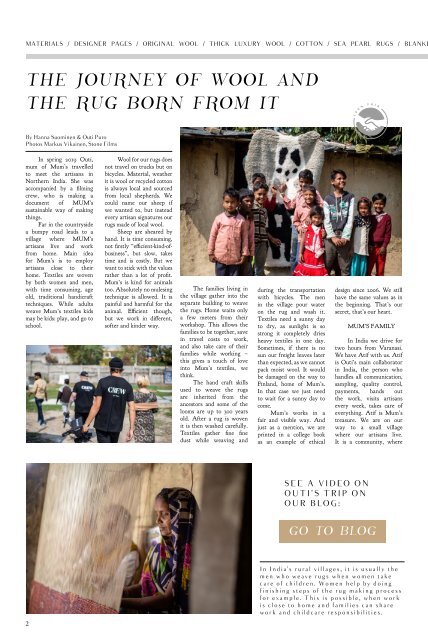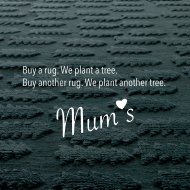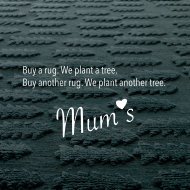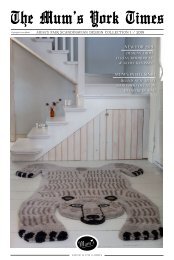Create successful ePaper yourself
Turn your PDF publications into a flip-book with our unique Google optimized e-Paper software.
MATERIALS / DESIGNER PAGES / ORIGINAL WOOL / THICK LUXURY WOOL / COTTON / SEA PEARL RUGS / BLANKE<br />
THE JOURNEY OF WOOL AND<br />
THE RUG BORN FROM IT<br />
0<br />
1<br />
0<br />
%<br />
F<br />
A<br />
I<br />
R<br />
By Hanna Suominen & Outi Puro<br />
Photos Markus Vikainen, Stone Films<br />
In spring <strong>2019</strong> Outi,<br />
mum of Mum’s travelled<br />
to meet the artisans in<br />
Northern India. She was<br />
accompanied by a filming<br />
crew, who is making a<br />
document of MUM’s<br />
sustainable way of making<br />
things.<br />
Far in the countryside<br />
a bumpy road leads to a<br />
village where MUM’s<br />
artisans live and work<br />
from home. Main idea<br />
for Mum’s is to employ<br />
artisans close to their<br />
home. Textiles are woven<br />
by both women and men,<br />
with time consuming, age<br />
old, traditional handicraft<br />
techniques. While adults<br />
weave Mum’s textiles kids<br />
may be kids: play, and go to<br />
school.<br />
Wool for our rugs does<br />
not travel on trucks but on<br />
bicycles. Material, weather<br />
it is wool or recycled cotton<br />
is always local and sourced<br />
from local shepherds. We<br />
could name our sheep if<br />
we wanted to, but instead<br />
every artisan signatures our<br />
rugs made of local wool.<br />
Sheep are sheared by<br />
hand. It is time consuming,<br />
not firstly “efficient-kind-ofbusiness”,<br />
but slow, takes<br />
time and is costly. But we<br />
want to stick with the values<br />
rather than a lot of profit.<br />
Mum’s is kind for animals<br />
too. Absolutely no mulesing<br />
technique is allowed. It is<br />
painful and harmful for the<br />
animal. Efficient though,<br />
but we work in different,<br />
softer and kinder way.<br />
The families living in<br />
the village gather into the<br />
separate building to weave<br />
the rugs. Home waits only<br />
a few meters from their<br />
workshop. This allows the<br />
families to be together, save<br />
in travel costs to work,<br />
and also take care of their<br />
families while working –<br />
this gives a touch of love<br />
into Mum’s textiles, we<br />
think.<br />
The hand craft skills<br />
used to weave the rugs<br />
are inherited from the<br />
ancestors and some of the<br />
looms are up to 300 years<br />
old. After a rug is woven<br />
it is then washed carefully.<br />
Textiles gather fine fine<br />
dust while weaving and<br />
during the transportation<br />
with bicycles. The men<br />
in the village pour water<br />
on the rug and wash it.<br />
Textiles need a sunny day<br />
to dry, as sunlight is so<br />
strong it completely dries<br />
heavy textiles in one day.<br />
Sometimes, if there is no<br />
sun our freight leaves later<br />
than expected, as we cannot<br />
pack moist wool. It would<br />
be damaged on the way to<br />
Finland, home of Mum’s.<br />
In that case we just need<br />
to wait for a sunny day to<br />
come.<br />
Mum’s works in a<br />
fair and visible way. And<br />
just as a mention, we are<br />
printed in a college book<br />
as an example of ethical<br />
design since 2006. We still<br />
have the same values as in<br />
the beginning. That’s our<br />
secret, that’s our heart.<br />
MUM’S FAMILY<br />
In India we drive for<br />
two hours from Varanasi.<br />
We have Atif with us. Atif<br />
is Outi’s main collaborator<br />
in India, the person who<br />
handles all communication,<br />
sampling, quality control,<br />
payments, hands out<br />
the work, visits artisans<br />
every week, takes care of<br />
everything. Atif is Mum’s<br />
treasure. We are on our<br />
way to a small village<br />
where our artisans live.<br />
It is a community, where<br />
SEE A VIDEO ON<br />
OUTI'S TRIP ON<br />
OUR BLOG:<br />
2<br />
In India's rural villages, it is usually the<br />
men who weave rugs when women take<br />
care of children. Women help by doing<br />
finishing steps of the rug making process<br />
for example. This is possible, when work<br />
is close to home and families can share<br />
work and childcare responsibilities.

















